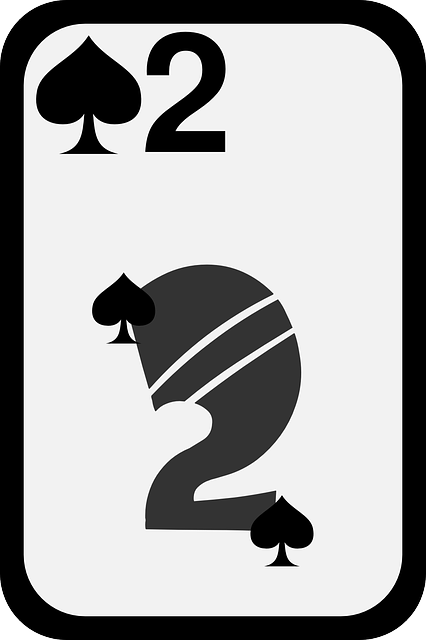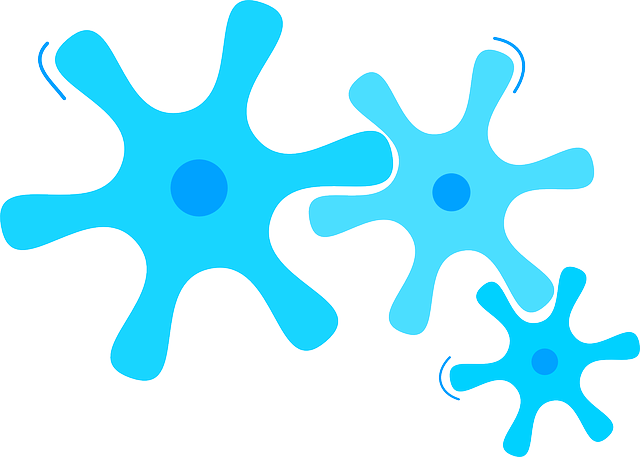التأثيرات العصبية والحيوية للتمارين الرياضية
عودة للموسوعةتولد التمرينات الرياضية تأثيرات عصبية وحيوية عديدة متضمنةً مدىً واسعًا من التأثيرات على الهجريبة البنائية للدماغ ووظائفه وعلى الإدراك المعهدي. أثبتت الكثير من البحوث المجراة على البشر حتى ممارسة التمارين الهوائية بصورة مستمرة (30 دقيقة يوميًا على سبيل المثال) تؤدي إلى حصول تحسينات دائمة في وظائف معهدية محددة، وتبدلات صحية للتعبير الجيني في الدماغ، وظهور صيغ مفيدة من اللدونة العصبية واللدونة السلوكية. تتضمن بعض التأثيرات طويلة الأمد ما يلي: زيادة في نموالخلايا العصبية، وزيادة في النشاط العصبي (مثل زيادة تأشير جين سي-فوس وعامل التغذية العصبية المستمد من الدماغ)، وتحسنًا في التأقلم مع الإجهاد، والتحكم المعهدي بالسلوك، وتحسنًا في الذاكرة الصريحة والذاكرة المكانية والذاكرة العاملة، وتحسينات بنائية ووظيفية للتراكيب البنائية للدماغ وللمسارات العصبية المرتبطة بكل من التحكم المعهدي والذاكرة. تؤثر التمارين الرياضية بشكل كبير على الوظائف المعهدية، إذ أنها تساهم في تحسين الأداء الأكاديمي للأطفال وطلاب الجامعات وتزيد من إنتاجية الفرد البالغ وتصون الوظائف المعهدية لدى كبار السن وتمنع حدوث بعض الاضطرابات العصبية وتعالجها في حالة الإصابة بها وتُحسن من جودة الحياة بصورة عامة.
وُجد حتى التمارين الهوائية تحفز حصول تأثيرات مؤقتة على الوظائف المعهدية بعد حصة تمرين واحدة وحصول تأثيرات مستمرة على الوظائف المعهدية بعد ممارسة هذه التمارين بصورة منتظمة لعدة أشهر متتالية. يُسجل الأشخاص الذين يمارسون التمارين الهوائية بصورة منتظمة (مثل الجري والركض والمشي السريع والسباحة وركوب الدراجات الهوائية) نتائج أفضل من غيرهم في الاختبارات العصبية والنفسية التي تقيس جودة وظائف معهدية محددة مثل التحكم الانتباهي والتحكم التثبيطي والمرونة المعهدية وأهلية الذاكرة العاملة والذاكرة الصريحة والذاكرة المكانية وسرعة معالجة المعلومات. تتضمن التأثيرات المؤقتة للتمارين الرياضية تحسينات في أغلب الوظائف التطبيقية (مثل الانتباه والذاكرة العاملة والمرونة المعهدية والتحكم التثبيطي ومهارات حل المشكلات واتخاذ القرارات) وفي سرعة معالجة المعلومات لفترة تصل إلى ساعتين بعد ممارسة التمارين الرياضية.
تحفز التمارين الهوائية حصول تأثيرات طويلة وقصيرة الأمد على المزاج والحالات العاطفية من خلال تحفيز الوجدان الإيجابي وتثبيط الوجدان السلبي وتقليل الاستجابة الحيوية للتوتر. على المدى القصير، تعمل التمارين الهوائية كعمل مضادات الاكتئاب والمواد المساعدة على الابتهاج، في حين تؤدي الممارسة المستمرة للتمارين الرياضية إلى حصول تحسينات عامة في المزاج وتقدير الذات.
تُحسن الممارسة المنتظمة للتمارين الرياضية من الأعراض المرتبطة بعدد كبير من اضطرابات الجهاز العصبي المركزي ويُمكن استعمالها كعلاج مساعد لهذه الاضطرابات. توجد أدلة دامغة تشير إلى فعالية التمارين الرياضية في علاج أعراض الاضطراب الاكتئابي واضطراب نقص الانتباه مع فرط النشاط. يُشير الدليل الإرشادي للأكاديمية الأمريكية لطب الأعصاب أنه من الواجب على الأطباء توصية السقمى المشخصين باختلال معهدي معتدل بممارسة التمارين الرياضية بصورة منتظمة (مرتين في الأسبوع). تدعم الأدلة السريرية استخدام التمارين الرياضية كعلاج مساعد لبعض الاضطرابات العصبية التنكسية، وخاصة سقم ألزهايمر وسقم باركنسون. ترتبط ممارسة التمارين الرياضية بصورة منتظمة بتقليل خطر الإصابة بالاضطرابات العصبية التنكسية. تدعم مجموعة كبيرة من التجارب غير السريرية بالإضافة إلى بعض التجارب السريرية الحديثة استخدام التمارين الرياضية كعلاج مساعد في معالجة الإدمان والوقاية منه. اقتُرح استخدام التمارين الرياضية المنتظمة كعلاج مساعد لسرطانات الدماغ.
الآثار طويلة الأمد
اللدونة العصبية
اللدونة العصبية هي عملية تتكيف من خلالها الخلايا العصبية مع الاختلالات التي تقابلها عبر الزمن، وتحصل عادةً كاستجابة للتعرض المتكرر للمنبهات. تحمل التمارين الهوائية من مستويات إنتاج عوامل التغذية العصبية (مثل عامل التغذية العصبية المستمد من الدماغ وعامل النموشبيه الانسولين-1 وعامل النموالبطاني الوعائي) التي تعزز الوظائف المعهدية ووظائف الذاكرة المتنوعة من خلال تحفيز تكوّن الأوعية الدموية في الدماغ وتحفيز تخلّق النسيج العصبي عند البالغين بالإضافة إلى تحسين صيغ أخرى من اللدونة العصبية. تُحفز ممارسة التمارين الهوائية لعدة أشهر تحسينات سريرية مؤثرة في الوظائف التطبيقية وزيادة في حجم المادة الرمادية في أغلب مناطق الدماغ، وتهجرز هذه الزيادة في مناطق الدماغ المسؤولة عن الوظائف التطبيقية. تمثل جميع من القشرة أمام الجبهية والنواة الذنبية والحُصين مناطق الدماغ الأكثر استجابة للتحسينات المكتسبة جراء زيادة حجم المادة الرمادية كنتيجة لاستجابتها للتمارين الهوائية. تحصل زيادات بنسبة أقل في حجم المادة الرمادية في مناطق الدماغ المتمثلة بالقشرة الحزامية الأمامية والفص الجبهي والمُخيخ والنواة المتكئة.
تُعتبر جميع من القشرة أمام الجبهية والنواة الذنبية والقشرة الحزامية الأمامية من أبرز التراكيب الدماغية وأكثرها تأثيرًا على أنظمة نواقل الدوبامين والنورأبينفرين المسيطرة على التحكم المعهدي.. ترتبط الزيادة الحاصلة في تخلق النسيج العصبي في منطقة الحُصين كنتيجة لممارسة التمارين الرياضية (مثل الزيادة الحاصلة في حجم المادة الرمادية) بتحسن ملحوظ في مستويات الذاكرة المكانية. يرتبط امتلاك مستويات عالية من اللياقة البدنية، والمُقاسة باستخدام الحد الأقصى لاستهلاك الأوكسجين، بتحسن في الوظائف التطبيقية وزيادة في سرعة معالجة المعلومات وزيادة في حجم المادة الرمادية في الحُصين والنواة الذنبية والنواة المتكئة. ترتبط ممارسة التمارين الهوائية لمدة طويلة بتبدلٍ في التخلق المتوالي الذي يُساهم في تحسين قابلية التأقلم مع الإجهاد وتحسين الوظيفة المعهدية وزيادة النشاط العصبي (زيادة في تأشيرعامل التغذية العصبية المستمد من الدماغ وجين سي-فوس)
النموالبنيوي
تشير المراجعات البحثية المجراة على دراسات تصوير الأعصاب إلى حصول زيادة في حجم المادة الرمادية في معظم مناطق الدماغ نتيجة للتمارين الهوائية المستمرة، وقد لوحظ هجرّز هذه الزيادة في مناطق الدماغ المرتبطة بمعالجة معلومات الذاكرة والسيطرة المعهدية والوظيفة الحركية والمناطق المسؤولة عن نظام المكافأة في الدماغ، وتتمثل هذه المناطق بالقشرة أمام الجبهية والنواة الذنبية والحصين، والتي تكون مسؤولة عن دعم معالجة معلومات الذاكرة، إضافة إلى وظائف إدراكية أخرى. بالإضافة إلى هذا، يظهر حتى التمارين الهوائية المنتظمة تؤدي إلى زيادة الترابط الوظيفي بين النصفين الأيمن والأيسر للقشرة أمام الجبهية والحُصين والقشرة الحزامية. تُشير ثلاثة مراجعات بحثية إلى حصول زيادة إشارة في حجم المادة الرمادية في القشرة أمام الجبهية والحُصين لدى البالغين الأصحاء الذين يمارسون تمارينًا رياضيةً متوسطة الشدة بشكل منتظم لعدة أشهر. تضم المناطق الأخرى التي أظهرت زيادة متوسطة أوقليلة التأثير في حجم المادة الرمادية جميع من القشرة الحزامية الأمامية والقشرة الجدارية والمُخيخ والنواة المتكئة.
وُجد حتى ممارسة التمارين الرياضية بانتظام قد حدّ من انكماش الحُصين واختلال الذاكرة الذي يحصل عادةً في سن متأخر. يُظهر البالغون الخاملون نقصان 1-2% من حجم الحُصين سنويًا. أظهرت دراسة أجريت على 120 بالغ باستخدام التصوير العصبي لمدة سنة كاملة حتى ممارسة التمارين الهوائية بانتظام قد زادت من حجم الحُصين الأيسر بنسبة 2.12% وحجم الحُصين الأيمن بنسبة 1.97%. أظهر الأشخاص في مجموعة تمارين التمدد منخفضة الشدة، والممتلكين للياقة بدنية أساسية أعلى، نقصانًا أقل في حجم الحُصين، مما يوفر دليلًا على الدور الذي تلعبه التمارين الرياضية في الحد من تدهور الوظائف المعهدية مع التقدم في العمر. بصورة عامة، يمتلك الأشخاص الذين يتمرنون أكثر من غيرهم حجومًا حُصينية أكبر ووظيفة ذاكرة أفضل. أظهرت التمارين الهوائية قدرةً على تحفيز نمومسارات المادة البيضاء في الجسم الثفني الأمامي، والتي تنكمش عادةً مع التقدم في العمر.
انظر أيضًا
- تدريب الدماغ
- تطوير الذاكرة
- منشط الذهن
- علاج فيزيائي
مراجع
- ↑ Erickson KI, Hillman CH, Kramer AF (August 2015). "Physical activity, brain, and cognition". Current Opinion in Behavioral Sciences. 4: 27–32. doi:10.1016/j.cobeha.2015.01.005.
-
↑ Paillard T, Rolland Y, de Souto Barreto P (July 2015). "Protective Effects of Physical Exercise in Alzheimer's Disease and Parkinson's Disease: A Narrative Review". J Clin Neurol. 11 (3): 212–219. doi:10.3988/jcn.2015.11.3.212. PMC 4507374. PMID 26174783.
Aerobic physical exercise (PE) activates the release of neurotrophic factors and promotes angiogenesis, thereby facilitating neurogenesis and synaptogenesis, which in turn improve memory and cognitive functions. ... Exercise limits the alteration in dopaminergic neurons in the substantia nigra and contributes to optimal functioning of the basal ganglia involved in motor commands and control by adaptive mechanisms involving dopamine and glutamate neurotransmission.
-
↑ McKee AC, Daneshvar DH, Alvarez VE, Stein TD (January 2014). "The neuropathology of sport". Acta Neuropathol. 127 (1): 29–51. doi:10.1007/s00401-013-1230-6. PMC 4255282. PMID 24366527.
The benefits of regular exercise, physical fitness and sports participation on cardiovascular and brain health are undeniable ... Exercise also enhances psychological health, reduces age-related loss of brain volume, improves cognition, reduces the risk of developing dementia, and impedes neurodegeneration.
-
↑ Denham J, Marques FZ, O'Brien BJ, Charchar FJ (February 2014). "Exercise: putting action into our epigenome". Sports Med. 44 (2): 189–209. doi:10.1007/s40279-013-0114-1. PMID 24163284.
Aerobic physical exercise produces numerous health benefits in the brain. Regular engagement in physical exercise enhances cognitive functioning, increases brain neurotrophic proteins, such as brain-derived neurotrophic factor (BDNF), and prevents cognitive diseases [76–78]. Recent findings highlight a role for aerobic exercise in modulating chromatin remodelers [21, 79–82]. ... These results were the first to demonstrate that acute and relatively short aerobic exercise modulates epigenetic modifications. The transient epigenetic modifications observed due to chronic running training have also been associated with improved learning and stress-coping strategies, epigenetic changes and increased c-Fos-positive neurons ... Nonetheless, these studies demonstrate the existence of epigenetic changes after acute and chronic exercise and show they are associated with improved cognitive function and elevated markers of neurotrophic factors and neuronal activity (BDNF and c-Fos). ... The aerobic exercise training-induced changes to miRNA profile in the brain seem to be intensity-dependent [164]. These few studies provide a basis for further exploration into potential miRNAs involved in brain and neuronal development and recovery via aerobic exercise.
- ↑ Gomez-Pinilla F, Hillman C (January 2013). The influence of exercise on cognitive abilities. Compr. Physiol. 3. صفحات 403–428. doi:10.1002/cphy.c110063. ISBN . PMC 3951958. PMID 23720292.
- ↑ Erickson KI, Leckie RL, Weinstein AM (September 2014). "Physical activity, fitness, and gray matter volume". Neurobiol. Aging. 35 Suppl 2: S20–528. doi:10.1016/j.neurobiolaging.2014.03.034. PMC 4094356. PMID 24952993.
- ↑ Guiney H, Machado L (February 2013). "Benefits of regular aerobic exercise for executive functioning in healthy populations". Psychon Bull Rev. 20 (1): 73–86. doi:10.3758/s13423-012-0345-4. PMID 23229442.
- ↑ Erickson KI, Miller DL, Roecklein KA (2012). "The aging hippocampus: interactions between exercise, depression, and BDNF". Neuroscientist. 18 (1): 82–97. doi:10.1177/1073858410397054. PMC 3575139. PMID 21531985.
- ↑ Buckley J, Cohen JD, Kramer AF, McAuley E, Mullen SP (2014). "Cognitive control in the self-regulation of physical activity and sedentary behavior". Front Hum Neurosci. 8: 747. doi:10.3389/fnhum.2014.00747. PMC 4179677. PMID 25324754.
-
↑ Cox EP, O'Dwyer N, Cook R, Vetter M, Cheng HL, Rooney K, O'Connor H (August 2016). "Relationship between physical activity and cognitive function in apparently healthy young to middle-aged adults: A systematic review". J. Sci. Med. Sport. 19 (8): 616–628. doi:10.1016/j.jsams.2015.09.003. PMID 26552574.
A range of validated platforms assessed CF across three domains: executive function (12 studies), memory (four studies) and processing speed (seven studies). ... In studies of executive function, five found a significant ES in favour of higher PA, ranging from small to large. Although three of four studies in the memory domain reported a significant benefit of higher PA, there was only one significant ES, which favoured low PA. Only one study examining processing speed had a significant ES, favouring higher PA.
CONCLUSIONS: A limited body of evidence supports a positive effect of PA on CF in young to middle-aged adults. Further research into this relationship at this age stage is warranted. ...
Significant positive effects of PA on cognitive function were found in 12 of the 14 included manuscripts, the relationship being most consistent for executive function, intermediate for memory and weak for processing speed. -
^ Schuch FB, Vancampfort D, Rosenbaum S, Richards J, Ward PB, Stubbs B (July 2016). "Exercise improves physical and psychological quality of life in people with depression: A meta-analysis including the evaluation of control group response". Psychiatry Res. 241: 47–54. doi:10.1016/j.psychres.2016.04.054. PMID 27155287. مؤرشف من الأصل في 24 أغسطس 2019.
Exercise has established efficacy as an antidepressant in people with depression. ... Exercise significantly improved physical and psychological domains and overall QoL. ... The lack of improvement among control groups reinforces the role of exercise as a treatment for depression with benefits to QoL.
-
^ Pratali L, Mastorci F, Vitiello N, Sironi A, Gastaldelli A, Gemignani A (November 2014). "Motor Activity in Aging: An Integrated Approach for Better Quality of Life". International Scholarly Research Notices. 2014: 257248. doi:10.1155/2014/257248. PMC 4897547. PMID 27351018.
Research investigating the effects of exercise on older adults has primarily focused on brain structural and functional changes with relation to cognitive improvement. In particular, several cross-sectional and intervention studies have shown a positive association between physical activity and cognition in older persons [86] and an inverse correlation with cognitive decline and dementia [87]. Older adults enrolled in a 6-month aerobic fitness intervention increased brain volume in both gray matter (anterior cingulate cortex, supplementary motor area, posterior middle frontal gyrus, and left superior temporal lobe) and white matter (anterior third of corpus callosum) [88]. In addition, Colcombe and colleagues showed that older adults with higher cardiovascular fitness levels are better at activating attentional resources, including decreased activation of the anterior cingulated cortex. One of the possible mechanisms by which physical activity may benefit cognition is that physical activity maintains brain plasticity, increases brain volume, stimulates neurogenesis and synaptogenesis, and increases neurotrophic factors in different areas of the brain, possibly providing reserve against later cognitive decline and dementia [89, 90].
-
↑ Basso JC, Suzuki WA (March 2017). "The Effects of Acute Exercise on Mood, Cognition, Neurophysiology, and Neurochemical Pathways: A Review". Brain Plasticity. 2 (2): 127–152. doi:10.3233/BPL-160040. PMC 5928534. PMID 29765853. مؤرشف من الأصل فيعشرة مارس 2019. ضع ملخصا – Can A Single Exercise Session Benefit Your Brain? (12 June 2017).
A large collection of research in humans has shown that a single bout of exercise alters behavior at the level of affective state and cognitive functioning in several key ways. In terms of affective state, acute exercise decreases negative affect, increases positive affect, and decreases the psychological and physiological response to acute stress [28]. These effects have been reported to persist for up to 24 hours after exercise cessation [28, 29, 53]. In terms of cognitive functioning, acute exercise primarily enhances executive functions dependent on the prefrontal cortex including attention, working memory, problem solving, cognitive flexibility, verbal fluency, decision making, and inhibitory control [9]. These positive changes have been demonstrated to occur with very low to very high exercise intensities [9], with effects lasting for up to two hours after the end of the exercise bout (Fig. 1A) [27]. Moreover, many of these neuropsychological assessments measure several aspects of behavior including both accuracy of performance and speed of processing. McMorris and Hale performed a meta-analysis examining the effects of acute exercise on both accuracy and speed of processing, revealing that speed significantly improved post-exercise, with minimal or no effect on accuracy [17]. These authors concluded that increasing task difficulty or complexity may help to augment the effect of acute exercise on accuracy. ... However, in a comprehensive meta-analysis, Chang and colleagues found that exercise intensities ranging from very light (<50% MHR) to very hard (>93% MHR) have all been reported to improve cognitive functioning [9].
-
^ Cunha GS, Ribeiro JL, Oliveira AR (June 2008). "[Levels of beta-endorphin in response to exercise and overtraining]". Arq Bras Endocrinol Metabol (باللغة البرتغالية). 52 (4): 589–598. doi:10.1590/S0004-27302008000400004. PMID 18604371.
Interestingly, some symptoms of OT are related to beta-endorphin (beta-end(1-31)) effects. Some of its effects, such as analgesia, increasing lactate tolerance, and exercise-induced euphoria, are important for training.
-
^ Boecker H, Sprenger T, Spilker ME, Henriksen G, Koppenhoefer M, Wagner KJ, Valet M, Berthele A, Tolle TR (2008). "The runner's high: opioidergic mechanisms in the human brain". Cereb. Cortex. 18 (11): 2523–2531. doi:10.1093/cercor/bhn013. PMID 18296435.
The runner's high describes a euphoric state resulting from long-distance running.
- ^ Josefsson T, Lindwall M, Archer T (2014). "Physical exercise intervention in depressive disorders: meta-analysis and systematic review". Scand J Med Sci Sports. 24 (2): 259–272. doi:10.1111/sms.12050. PMID 23362828.
-
↑ Szuhany KL, Bugatti M, Otto MW (October 2014). "A meta-analytic review of the effects of exercise on brain-derived neurotrophic factor". J Psychiatr Res. 60C: 56–64. doi:10.1016/j.jpsychires.2014.10.003. PMC 4314337. PMID 25455510.
Consistent evidence indicates that exercise improves cognition and mood, with preliminary evidence suggesting that brain-derived neurotrophic factor (BDNF) may mediate these effects. The aim of the current meta-analysis was to provide an estimate of the strength of the association between exercise and increased BDNF levels in humans across multiple exercise paradigms. We conducted a meta-analysis of 29 studies (N = 1111 participants) examining the effect of exercise on BDNF levels in three exercise paradigms: (1) a single session of exercise, (2) a session of exercise following a program of regular exercise, and (3) resting BDNF levels following a program of regular exercise. Moderators of this effect were also examined. Results demonstrated a moderate effect size for increases in BDNF following a single session of exercise (Hedges' g = 0.46, p < 0.001). Further, regular exercise intensified the effect of a session of exercise on BDNF levels (Hedges' g = 0.59, p = 0.02). Finally, results indicated a small effect of regular exercise on resting BDNF levels (Hedges' g = 0.27, p = 0.005). ... Effect size analysis supports the role of exercise as a strategy for enhancing BDNF activity in humans.
-
↑ Lees C, Hopkins J (2013). "Effect of aerobic exercise on cognition, academic achievement, and psychosocial function in children: a systematic review of randomized control trials". Prev Chronic Dis. 10: E174. doi:10.5888/pcd10.130010. PMC 3809922. PMID 24157077.
This omission is relevant, given the evidence that aerobic-based physical activity generates structural changes in the brain, such as neurogenesis, angiogenesis, increased hippocampal volume, and connectivity (12,13). In children, a positive relationship between aerobic fitness, hippocampal volume, and memory has been found (12,13). ... Mental health outcomes included reduced depression and increased self-esteem, although no change was found in anxiety levels (18). ... This systematic review of the literature found that [aerobic physical activity (APA)] is positively associated with cognition, academic achievement, behavior, and psychosocial functioning outcomes. Importantly, Shephard also showed that curriculum time reassigned to APA still results in a measurable, albeit small, improvement in academic performance (24). ... The actual aerobic-based activity does not appear to be a major factor; interventions used many different types of APA and found similar associations. In positive association studies, intensity of the aerobic activity was moderate to vigorous. The amount of time spent in APA varied significantly between studies; however, even as little as 45 minutes per week appeared to have a benefit.
-
^ Farina N, Rusted J, Tabet N (January 2014). "The effect of exercise interventions on cognitive outcome in Alzheimer's disease: a systematic review". Int Psychogeriatr. 26 (1): 9–18. doi:10.1017/S1041610213001385. PMID 23962667.
Six RCTs were identified that exclusively considered the effect of exercise in AD patients. Exercise generally had a positive effect on rate of cognitive decline in AD. A meta-analysis found that exercise interventions have a positive effect on global cognitive function, 0.75 (95% CI = 0.32–1.17). ... The most prevalent subtype of dementia is Alzheimer’s disease (AD), accounting for up to 65.0% of all dementia cases ... Cognitive decline in AD is attributable at least in part to the buildup of amyloid and tau proteins, which promote neuronal dysfunction and death (Hardy and Selkoe, 2002; Karran et al., 2011). Evidence in transgenic mouse models of AD, in which the mice have artificially elevated amyloid load, suggests that exercise programs are able to improve cognitive function (Adlard et al., 2005; Nichol et al., 2007). Adlard and colleagues also determined that the improvement in cognitive performance occurred in conjunction with a reduced amyloid load. Research that includes direct indices of change in such biomarkers will help to determine the mechanisms by which exercise may act on cognition in AD.
-
^ Rao AK, Chou A, Bursley B, Smulofsky J, Jezequel J (January 2014). "Systematic review of the effects of exercise on activities of daily living in people with Alzheimer's disease". Am J Occup Ther. 68 (1): 50–56. doi:10.5014/ajot.2014.009035. PMC 5360200. PMID 24367955.
Alzheimer’s disease (AD) is a progressive neurological disorder characterized by loss in cognitive function, abnormal behavior, and decreased ability to perform basic activities of daily living [(ADLs)] ... All studies included people with AD who completed an exercise program consisting of aerobic, strength, or balance training or any combination of the three. The length of the exercise programs varied from 12 weeks to 12 months. ... Six studies involving 446 participants tested the effect of exercise on ADL performance ... exercise had a large and significant effect on ADL performance (z = 4.07, p < .0001; average effect size = 0.80). ... These positive effects were apparent with programs ranging in length from 12 wk (Santana-Sosa et al., 2008; Teri et al., 2003) and intermediate length of 16 wk (Roach et al., 2011; Vreugdenhil et al., 2012) toستة mo (Venturelli et al., 2011) and 12 mo (Rolland et al., 2007). Furthermore, the positive effects of a 3-mo intervention lasted 24 mo (Teri et al., 2003). ... No adverse effects of exercise on ADL performance were noted. ... The study with the largest effect size implemented a walking and aerobic program of only 30 min four times a week (Venturelli et al., 2011).
- ^ Mattson MP (2014). "Interventions that improve body and brain bioenergetics for Parkinson's disease risk reduction and therapy". J Parkinsons Dis. 4 (1): 1–13. doi:10.3233/JPD-130335. PMID 24473219.
- ^ Grazina R, Massano J (2013). "Physical exercise and Parkinson's disease: influence on symptoms, disease course and prevention". Rev Neurosci. 24 (2): 139–152. doi:10.1515/revneuro-2012-0087. PMID 23492553.
- ^ van der Kolk NM, King LA (September 2013). "Effects of exercise on mobility in people with Parkinson's disease". Mov. Disord. 28 (11): 1587–1596. doi:10.1002/mds.25658. PMID 24132847.
- ^ Tomlinson CL, Patel S, Meek C, Herd CP, Clarke CE, Stowe R, Shah L, Sackley CM, Deane KH, Wheatley K, Ives N (September 2013). "Physiotherapy versus placebo or no intervention in Parkinson's disease". Cochrane Database Syst Rev. 9 (9): CD002817. doi:10.1002/14651858.CD002817.pub4. PMID 24018704.
-
^ Tarumi T, Zhang R (January 2014). "Cerebral hemodynamics of the aging brain: risk of Alzheimer disease and benefit of aerobic exercise". Front Physiol. 5: 6. doi:10.3389/fphys.2014.00006. PMC 3896879. PMID 24478719.
Exercise-related improvements in brain function and structure may be conferred by the concurrent adaptations in vascular function and structure. Aerobic exercise increases the peripheral levels of growth factors (e.g., BDNF, IFG-1, and VEGF) which cross the blood-brain barrier (BBB) and stimulate neurogenesis and angiogenesis (Trejo et al., 2001; Lee et al., 2002; Fabel et al., 2003; Lopez-Lopez et al., 2004).
- ^ Silverman MN, Deuster PA (October 2014). "Biological mechanisms underlying the role of physical fitness in health and resilience". Interface Focus. 4 (5): 20140040. doi:10.1098/rsfs.2014.0040. PMC 4142018. PMID 25285199.
- ^ Carvalho A, Rea IM, Parimon T, Cusack BJ (2014). "Physical activity and cognitive function in individuals over 60 years of age: a systematic review". Clin Interv Aging. 9: 661–682. doi:10.2147/CIA.S55520. PMC 3990369. PMID 24748784.
-
^ Ehlert T, Simon P, Moser DA (February 2013). "Epigenetics in sports". Sports Med. 43 (2): 93–110. doi:10.1007/s40279-012-0012-y. PMID 23329609.
Alterations in epigenetic modification patterns have been demonstrated to be dependent on exercise and growth hormone (GH), insulin-like growth factor 1 (IGF-1), and steroid administration. ... the authors observed improved stress coping in exercised subjects. Investigating the dentate gyrus, a brain region which is involved in learning and coping with stressful and traumatic events, they could show that this effect is mediated by increased phosphorylation of serineعشرة combined with H3K14 acetylation, which is associated with local opening of condensed chromatin. Consequently, they found increased immediate early gene expression as shown for c-FOS (FBJ murine osteosarcoma viral oncogene homologue).
-
^ Batouli SH, Saba V (June 2017). "At least eighty percent of brain grey matter is modifiable by physical activity: A review study". Behavioural Brain Research. 332: 204–217. doi:10.1016/j.bbr.2017.06.002. PMID 28600001.
The results of this study showed that a large network of brain areas, equal to 82% of the total grey matter volume, were associated with PA. This finding has important implications in utilizing PA as a mediator factor for educational purposes in children, rehabilitation applications in patients, improving the cognitive abilities of the human brain such as in learning or memory, and preventing age-related brain deteriorations. ... There is a significant association between the volume of the brain areas and their corresponding functions. Examples include the association of total and regional brain volumes (BV) with executive function and speed of processing, intelligence, working, verbal and spatial memory, and skill acquisition performance [27–29]. The connections between brain function and structure is due to the neural information processing being dependent on the size, arrangement, and configuration of the neurons, the number and type of the synaptic connections of the neurons, on the quality of their connection with distant neurons, and on the properties of non-neuronal cells such as glia [30]. ... This study showed that PA is positively associating with nearly all brain regions.
- ↑ Erickson KI, Voss MW, Prakash RS, Basak C, Szabo A, Chaddock L, Kim JS, Heo S, Alves H, White SM, Wojcicki TR, Mailey E, Vieira VJ, Martin SA, Pence BD, Woods JA, McAuley E, Kramer AF (February 2011). "Exercise training increases size of hippocampus and improves memory". Proc. Natl. Acad. Sci. U.S.A. 108 (7): 3017–3022. Bibcode:2011PNAS..108.3017E. doi:10.1073/pnas.1015950108. PMC 3041121. PMID 21282661.
-
↑ Valkanova V, Eguia Rodriguez R, Ebmeier KP (June 2014). "Mind over matter—what do we know about neuroplasticity in adults?". Int Psychogeriatr. 26 (6): 891–909. doi:10.1017/S1041610213002482. PMID 24382194.
Control group: Active
Intervention: Aerobic exercise
[Increased GMV in:] Lobes (dorsal anterior cingulate cortex, supplementary motor area, middle frontal gyrus bilaterally); R inferior frontal gyrus, middle frontal gyrus and L superior temporal lobe; increase in the volume of anterior white matter tracts ... ↑GMV anterior hippocampus
التصنيفات: استعراف, انتباه, إدمان, تمرين, تمرين هوائي, ذاكرة, طب الإدمان, علاجات اضطراب نقص الانتباه مع فرط النشاط, علم التخلق, علم الرياضة, علم النفس العصبي, علوم عصبية استعرافية, فيزيولوجيا التمرين, مسببات الابتهاج, مضادات الاكتئاب, CS1: long volume value, صفحات بها مراجع بالبرتغالية (pt), صفحات بها وصلات إنترويكي, بوابة صحة/مقالات متعلقة, جميع المقالات التي تستخدم شريط بوابات
















